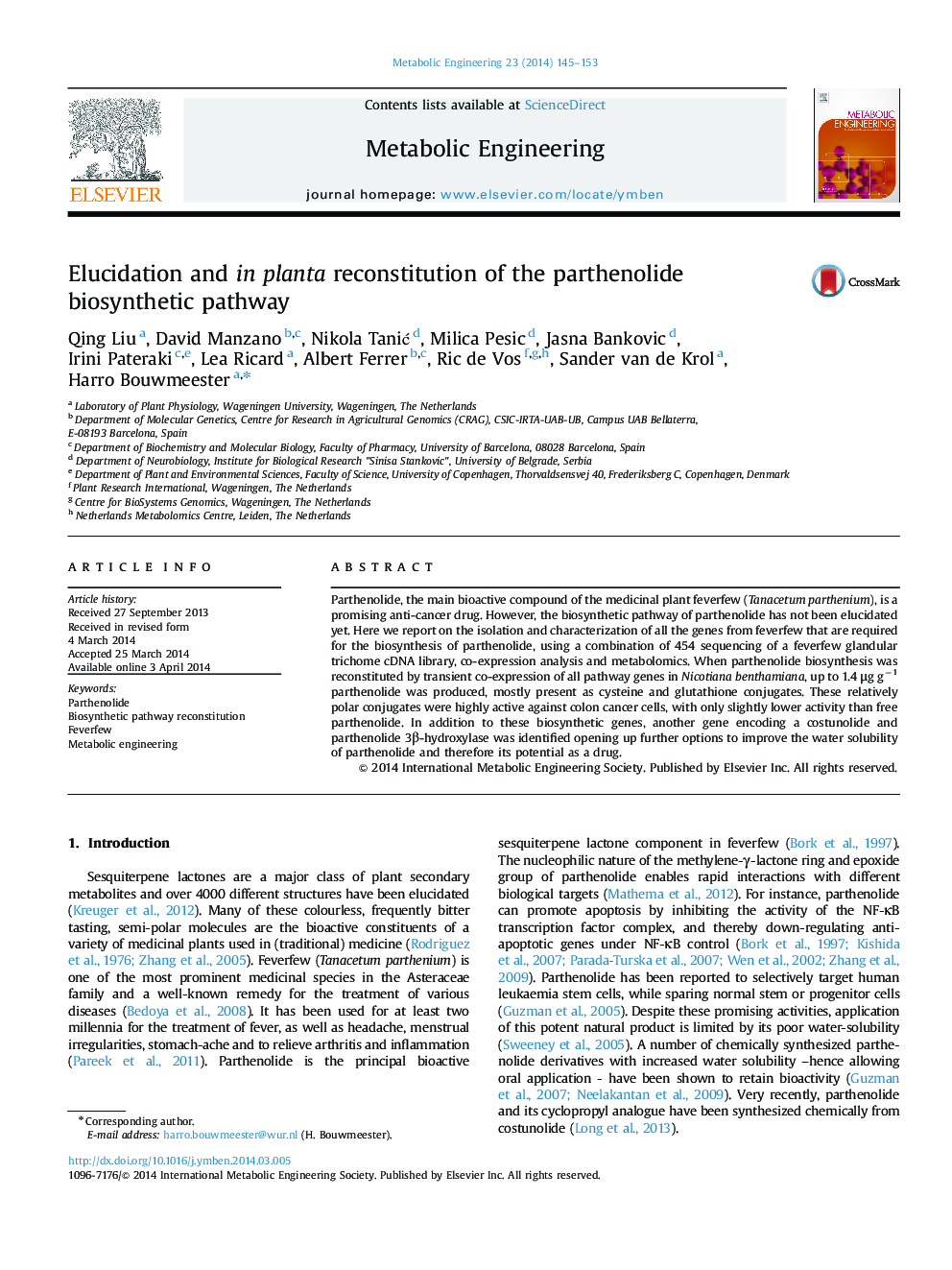| کد مقاله | کد نشریه | سال انتشار | مقاله انگلیسی | نسخه تمام متن |
|---|---|---|---|---|
| 31545 | 44810 | 2014 | 9 صفحه PDF | دانلود رایگان |
• The parthenolide biosynthetic pathway was elucidated by isolating all involved genes.
• The pathway was reconstituted in Nicotiana benthamiana by transient expression.
• Parthenolide produced in N. benthamiana leaves mostly present as conjugates.
• Those conjugates were active against colon cancer cells.
• Another gene encoding a costunolide and parthenolide 3β-hydroxylase was identified.
Parthenolide, the main bioactive compound of the medicinal plant feverfew (Tanacetum parthenium), is a promising anti-cancer drug. However, the biosynthetic pathway of parthenolide has not been elucidated yet. Here we report on the isolation and characterization of all the genes from feverfew that are required for the biosynthesis of parthenolide, using a combination of 454 sequencing of a feverfew glandular trichome cDNA library, co-expression analysis and metabolomics. When parthenolide biosynthesis was reconstituted by transient co-expression of all pathway genes in Nicotiana benthamiana, up to 1.4 μg g−1 parthenolide was produced, mostly present as cysteine and glutathione conjugates. These relatively polar conjugates were highly active against colon cancer cells, with only slightly lower activity than free parthenolide. In addition to these biosynthetic genes, another gene encoding a costunolide and parthenolide 3β-hydroxylase was identified opening up further options to improve the water solubility of parthenolide and therefore its potential as a drug.
Journal: Metabolic Engineering - Volume 23, May 2014, Pages 145–153
